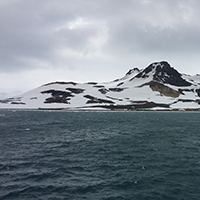Ciliates in different types of pools in temperate, tropical, and polar climate zones – implications for climate change

Accepted: 7 September 2021
HTML: 128
All claims expressed in this article are solely those of the authors and do not necessarily represent those of their affiliated organizations, or those of the publisher, the editors and the reviewers. Any product that may be evaluated in this article or claim that may be made by its manufacturer is not guaranteed or endorsed by the publisher.
Authors
Small water bodies are typically characterized by high diversity of various groups of microorganisms. Moreover, these ecosystems react very quickly to even the slightest climate changes (e.g. a temperature increase or water level fluctuations). Thus far, studies of planktonic ciliates in small water bodies having different origins and located in various climate zones have been scarce. Our study aimed to verify the following hypotheses: planktonic ciliate assemblages exhibit higher diversity in pools with higher concentrations of biogenic compounds; pools in warmer climates have higher biodiversity of planktonic ciliates than those in the polar climate zone; individual functional groups of ciliates demonstrate considerable diversity, both between individual pool types and between climate zones. The study was conducted in 21 small pools in temperate, tropical, and polar climate zones. While the type of pool clearly influenced the makeup of microbial communities, the influence of climate was stronger. The factors with the greatest influence on the occurrence of these microorganisms were temperature, total organic carbon, and nutrients. Our results show that in warmer climates the abundance of bacterivorous ciliates is higher, while that of mixotrophs is lower. This has consequences for modelling of climate change and assessment of its influence on the carbon cycle in small water body ecosystems.
Edited by
Diego Copetti, CNR-IRSA Brugherio, ItalyHow to Cite

This work is licensed under a Creative Commons Attribution-NonCommercial 4.0 International License.

 https://doi.org/10.4081/jlimnol.2021.1997
https://doi.org/10.4081/jlimnol.2021.1997



